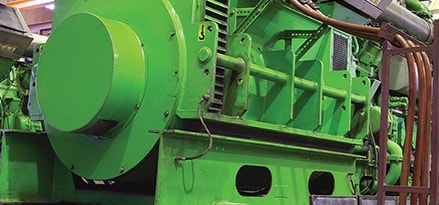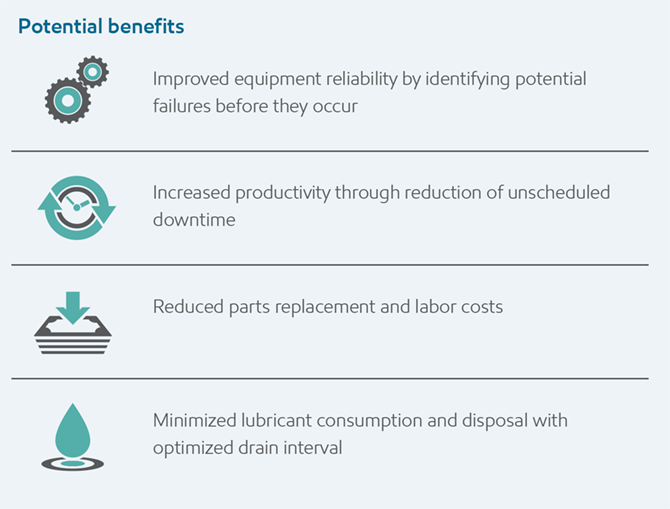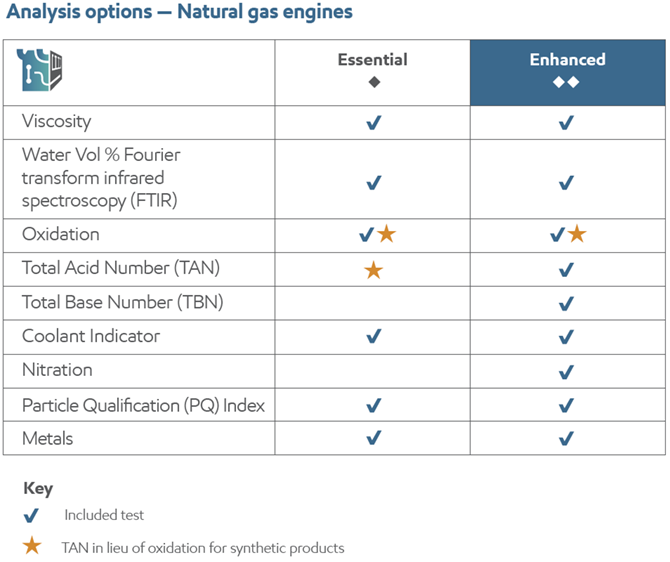Natural gas engine analysis

This service monitors hydraulic, circulating, gear and compressor oils for premature wear, contamination and oil condition
Description
This service is applicable to engines running clean natural gas or dual fuel applications. In addition to monitoring oil condition, this analysis helps you detect premature engine wear, coolant leaks and lubricant contamination.


| Test | Purpose | Importance of test |
|---|---|---|
| Coolant Indicator | To determine the level of sodium, potassium and boron in the compressor oil | Indicative of a coolant leak into the compressor |
| Metals | To determine the presence and levels of metallic content in the oil, including contaminants and wear particles | The level of metals helps determine if equipment components are wearing or if harmful contamination is entering the oil. The level of metals that are part of the additive chemistry are also reported |
| Nitration | To measure the amount of nitrogen by-products in hydraulic oil | In high-pressure pumps, nitration results from the rapid compression of entrained air. As a result, if unchecked, nitrogen and oxidation precursors might form sticky varnishes, which may lead to valve sticking |
| Oxidation | To determine the level of lubricant oxidation and deterioration |
Oxidation can mean:
|
| Particle Qualification (PQ) Index | To determine ferrous metal fatigue failures and metal-to-metal contact not usually detectable with some spectrographic analysis |
PQ Index can detect at an early stage:
|
| Total Acid Number (TAN) | To measure acidic oil oxidation by-products | An elevated Total Acid Number may indicate increased oil acidity resulting from increased oil oxidation |
| Total Base Number (TBN) | To determine the reserve alkalinity of the oil used to neutralize the formation of acids |
A decrease in Total Base Number may be indicative of:
|
| Viscosity | To determine the oil’s resistance to flow |
|
| Water | To detect presence of water contamination | Water contamination may cause severe corrosion and subsequent wear, poor oil film thickness or hydrogen embrittlement |
